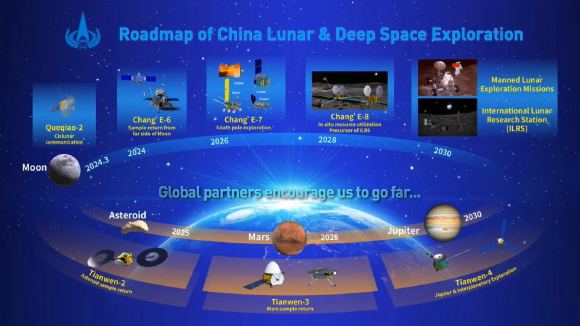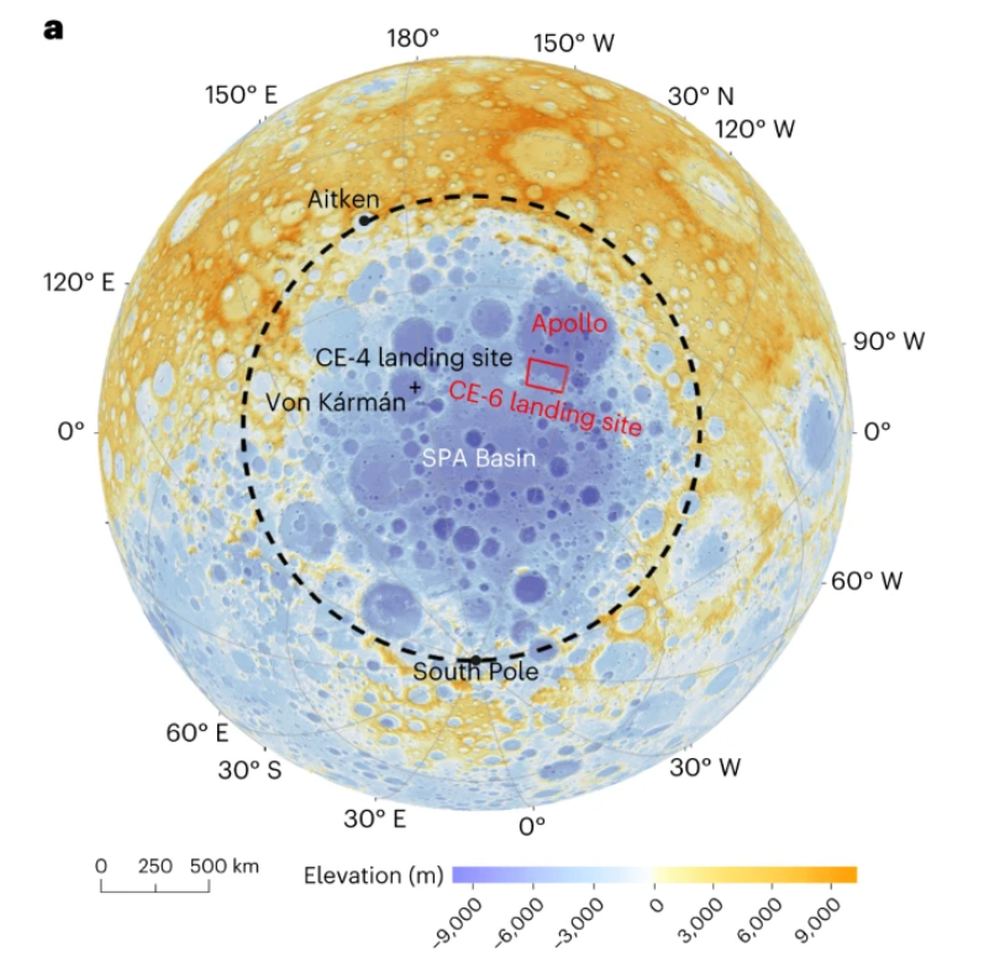Moon Age: How Lunar Surface Remelting Challenges Our Understanding
The Moon’s age, traditionally estimated to be 4.53 billion years, is challenged by lunar surface rocks collected during Apollo missions, which suggest a younger age of 4.35 billion years. A “remelting” event, caused by tidal heating, may have reset the geological clock of the Moon’s surface. This discovery reshapes our understanding of the Moon’s evolutionary history and has broader implications for planetary science.
Summary
- The Moon’s age has traditionally been estimated to be 4.53 billion years based on solar system formation models.
- Apollo mission samples indicate a younger age of 4.35 billion years, prompting questions about the Moon’s early history.
- Recent studies suggest a “global remelting” event reset the lunar surface’s geological clock approximately 4.35 billion years ago.
- This remelting is attributed to tidal heating caused by gravitational interactions between the Earth and Moon when the Moon was closer to Earth.
- Lunar zircon minerals support the older age of 4.51 billion years, while surface rocks reflect the “reset age.”
- Tidal heating, similar to processes observed on Jupiter’s volcanic moon Io, likely altered the Moon’s geological surface, erasing early craters and evidence of its initial state.
- Understanding lunar surface remelting offers insight into the broader history of solar system evolution, including the formation of Earth-Moon systems.
- Upcoming lunar missions, including China’s Chang’e 6, aim to collect new samples to validate these findings.
- The findings are important for planetary science. They help improve our understanding of how planets form. They also help us better understand the movement of planets in space, which is called orbital dynamics.
- To better understand the Moon’s evolutionary history, we need to study different fields. These fields include geology, orbital dynamics, and thermal modeling. Geology is the study of rocks, landforms, and the processes that change them over time. Orbital dynamics examines how objects like the Moon move in space. Thermal modeling looks at how heat is transferred on the Moon. By combining these studies, we gain important insights into how the Moon has changed over time.

The Moon’s Formation and Age Mystery
The Moon is one of the most studied objects in the solar system, yet its true age remains uncertain. Traditionally, scientists believed the Moon formed around 4.53 billion years ago, shortly after the solar system’s formation. This estimation is based on the widely accepted “giant impact hypothesis,” which suggests that a Mars-sized object, named Theia, collided with the early Earth. The debris from this collision eventually coalesced to form the Moon.
However, the Apollo missions, which brought back lunar rock samples, painted a different picture. These rocks, analyzed extensively, indicated a surface age of around 4.35 billion years, about 200 million years younger than the previously accepted age. This discrepancy raised a critical question: Is the Moon younger than we thought, or did some process reset the age of its surface rocks?
Recent studies, such as the one led by UC Santa Cruz professor Francis Nimmo, provide a compelling answer. The researchers propose that the Moon underwent a global remelting event approximately 4.35 billion years ago. This process, driven by tidal heating, likely reset the geological clock of the Moon’s surface, making its rocks appear younger than the Moon’s actual age.
Read more on Moon Formation from NASA
Evidence from Lunar Rocks
One of the strongest pieces of evidence supporting the Moon’s older age lies in the zircon minerals found on its surface. These minerals have been dated to at least 4.51 billion years, suggesting that the Moon formed much earlier than the age indicated by Apollo samples.
Thermal models and simulations also align with this older age. They estimate the Moon’s formation period to be between 4.43 and 4.53 billion years ago. However, the surface rocks collected by astronauts tell a different story.
According to Nimmo, “We predict that there shouldn’t be any lunar rocks that are older than 4.35 billion years because they should have experienced the same resetting. Because this heating event was global, you shouldn’t find rocks anywhere on the Moon that are significantly older than that.”
This finding explains why the Apollo mission samples reflect a younger surface age. The global remelting event likely erased evidence of earlier geological processes, leaving behind a “reset” surface.
Read the full study on remelting from Nature
The Role of Tidal Heating
Tidal heating is the process by which gravitational interactions between two celestial bodies generate internal friction and heat. This phenomenon is most famously observed on Jupiter’s moon Io, which experiences intense volcanic activity due to the tidal forces exerted by Jupiter.
The Moon, during its early years, was much closer to Earth. Its orbit was unstable, leading to significant tidal forces. These forces generated enough heat to cause a global remelting of the Moon’s surface approximately 4.35 billion years ago.
This remelting likely erased early craters and geological features, effectively “resetting” the Moon’s surface age. It also paved over evidence of the Moon’s initial formation period, complicating efforts to pinpoint its true age.
Comparison of Lunar and Io Surface Activity
| Feature | Moon | Io |
|---|---|---|
| Tidal Forces | Gravitational pull from Earth | Gravitational pull from Jupiter |
| Surface Remelting | Global remelting 4.35 Bya | Constant resurfacing |
| Geological Evidence | “Reset” lunar rocks | Frequent volcanic eruptions |
| Crater Visibility | Limited due to remelting | Minimal due to resurfacing |
Implications for Planetary Science
Understanding the Moon’s true age has broader implications for the study of planetary formation and evolution. The Moon’s history is closely tied to Earth’s, and insights into its formation provide valuable clues about the early solar system.
For example, the timing of the Moon’s formation helps refine models of Earth’s early environment. A younger Moon suggests a more chaotic early history, with multiple collisions and remelting events shaping the Earth-Moon system.
Moreover, the study of tidal heating on the Moon offers insights into similar processes on other celestial bodies. For instance, the volcanic activity on Io and the potential for subsurface oceans on Europa and Enceladus are also driven by tidal forces.

Key Discoveries About Lunar Age
| Discovery | Explanation |
|---|---|
| Zircon Mineral Dating | Indicates an older age of 4.51 billion years |
| Apollo Sample Dating | Reflects a younger surface age of 4.35 billion years due to remelting |
| Tidal Heating Effects | Caused global remelting, erasing evidence of the Moon’s initial state |
| Comparisons to Io | Similar processes observed on Io validate the tidal heating hypothesis |
Future Lunar Missions
Upcoming missions, such as China’s Chang’e 6, aim to collect new samples from the Moon’s surface. These samples could provide critical data to test the remelting hypothesis and further refine our understanding of the Moon’s age.
“As more data becomes available—particularly from ongoing and future lunar missions—the understanding of the Moon’s past will continue to evolve,” said Nimmo.
Learn about China’s Chang’e 6 mission
The return of lunar samples will also help scientists explore other unanswered questions about the Moon’s history, including the nature of its early craters and the composition of its interior.
The discovery of a global remelting event on the Moon challenges long-held assumptions about its age and evolutionary history. While traditional models suggest a formation age of 4.53 billion years, surface samples indicate a younger age of 4.35 billion years. This discrepancy is now explained by tidal heating, which reset the Moon’s geological clock during its early history.
This finding has far-reaching implications for planetary science, offering new insights into the processes that shape celestial bodies. As new missions continue to explore the Moon, scientists hope to uncover more secrets about its past and its role in the broader history of the solar system.
Fun Facts
- The Moon is moving away from Earth at a rate of approximately 3.8 centimeters per year.
- Lunar rocks brought back by Apollo astronauts are among the oldest samples in the solar system.
- The Moon’s surface is covered with regolith, a fine, powdery dust formed by billions of years of impacts.
References
- A “Remelting” of Lunar Surface Adds a Wrinkle to Mystery of Moon’s True Age
- Tidally Driven Remelting Around 4.35 Billion Years Ago Indicates the Moon is Old
- Moon Formation – NASA







